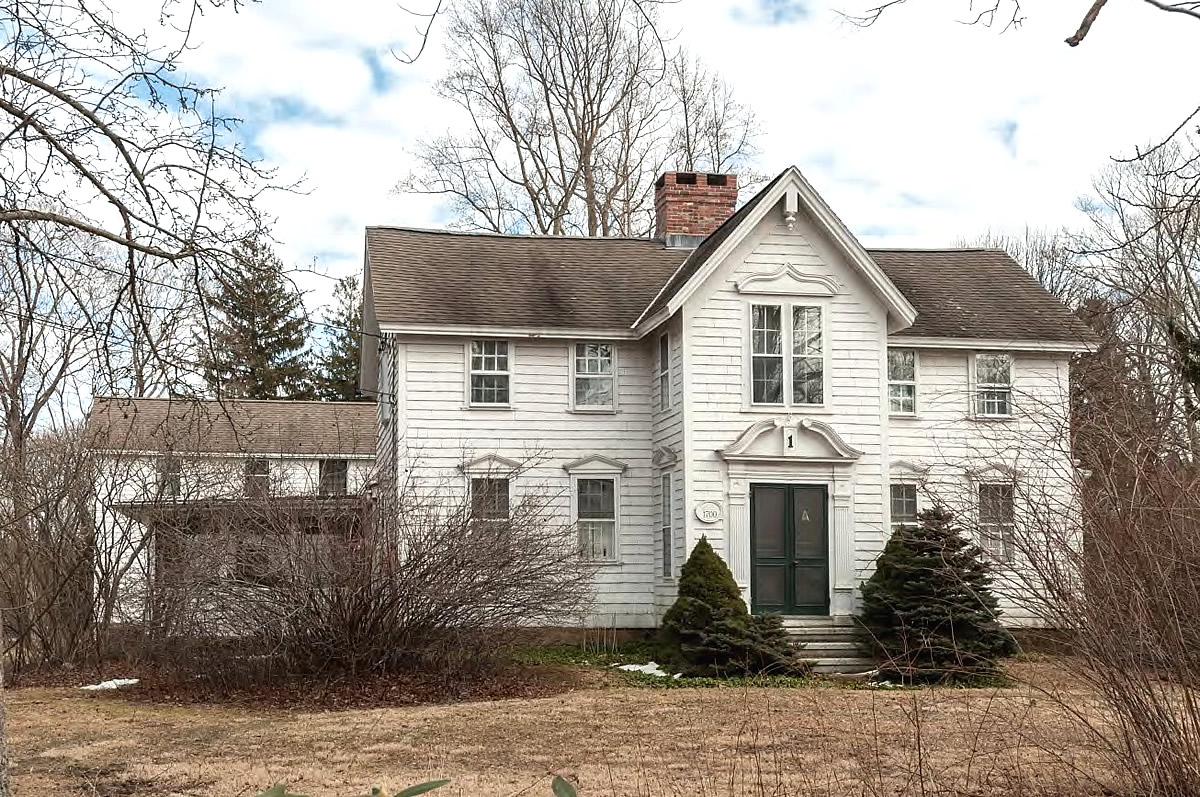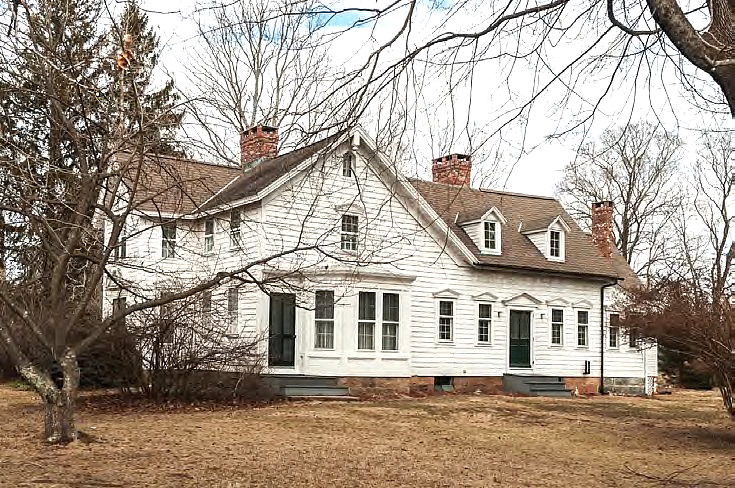

John McCurdy (1724-1785) was born in County Antrim in Ireland, the son of a Scottish Presbyterian clergyman. He was the third generation descended from one of five brothers who fled English persecution in Scotland to settle in northern Ireland in 1666. He probably learned his business skills in Belfast, before emigrating to New York in 1745, where he was known as a merchant by 1747.
 Photo: View east showing façade. (Tod Bryant)
Photo: View east showing façade. (Tod Bryant)
 Photo: View northeast showing façade and south elevation. (Tod Bryant)
Photo: View northeast showing façade and south elevation. (Tod Bryant)
He purchased this house from Amos Tinker in 1753 when he moved to Lyme. McCurdy was active in many forms of maritime trade, including privateering, and he became one of the wealthiest merchants in the Colony. He was an outspoken opponent of the Stamp Act and Martha Lamb In an 1891 article in the Magazine of American History states:
"John McCurdy had a hereditary sense of wrong against the British government, which was quickly roused when oppressive measures were inaugurated against the American colonies. Personal and religious freedom were dear to him, and he was fearless in his wish to meet the crisis with determined and out-spoken opposition. The pastor of the Lyme church, Rev. Stephen Johnson, lived just below John McCurdy on the old post road, and these two men had many animated conferences upon the subject of the possible independence of the colonies, more than ten years before the outbreak of the Revolution.
They grew indignant with the serene composure of Governor Fitch and his associates, and Rev. Stephen Johnson wrote a series of letters, pointing toward unqualified rebellion in case an attempt was made to enforce the Stamp Act. These letters, designed to rouse the community to a sense of impending danger, were published and disseminated at the expense of McCurdy, and at his imminent risk, disloyalty being treason. Many of them appeared in the Connecticut Gazette, and they are believed to have inspired the organization of the Sons of Liberty. Gordon, in his history, refers to McCurdy as the "Irish gentleman, friendly to the cause of liberty," who happening to be in New York when the inflammatory Virginia resolutions of 1765 " were being handed about with great privacy, no one having the courage to print them, inquired after them, and with much precaution was permitted to take a copy.
He carried them to New England, where they were published and circulated far and wide in the newspapers, without any reserve, and proved eventually the occasion of those disorders which afterward broke out in the colonies." During the war he was one of a committee that had charge of the coastguard under the government."
McCurdy was a prominent figure among Connecticut patriots during the Revolution. George Washington was his guest here on the 9th of April, 1776, while travelling from Boston to New York. The house was on the old post road between Boston and New York, over which nearly all the distinguished men of the Revolution passed at one time or another during the period and many of the were cordially welcomed and entertained by John McCurdy in this unique colonial homestead. Lafayette first visited McCurdy here on July 27, 1778 and he was welcomed back in 1824, when he was entertained by Richard McCurdy, the youngest son of John McCurdy.
Lamb , Martha. "Judge Charles Johnson McCurdy, 1797-1891 His Historic Home in Lyme, Conncticut." Magazine of
American History. Vol. XXVI November, 1891 No.5.
O'Brien, Michael J. "A Hidden Phase in American History," New York, Dodd, Mead and Company, 1919.
Morrison, Hugh. Early American Architecture. New York. Oxford University Press. 1952.
This is a side gable building with a projecting central facade and a brick chimney at the center of the roof ridge. The main entrance is centered on the facade and it has fluted pilasters supporting a broken scroll pediment. There is a tall pair of double hung windows above the doorway which are surmounted by a curved pediment. There is a pendant at the peak of the gable.
The wings on each side of the central gable each have two evenly spaced six-over-six double hung windows surmounted by triangular pediments on the first story. They each have two evenly spaced six-over-six double hung windows whose tops are at the cornice. The chimney is especially tall and elaborated with four pilasters and a flared cap. This style of chimney is more common in early houses in Massachusetts. The house has been expanded many times and there are several eras of construction included in the current building.
The John McCurdy House is at the corner of Lyme Street and McCurdy Road on a 2.55 acre site in a residential neighborhood of mostly 18th and 19th century buildings in the center of Old Lyme. The First Congregational Church of Old Lyme (1817) is directly across Lyme Street to the west. It is at the south end of the Old Lyme Historic District which includes all of the buildings between McCurdy Road and Interstate 95 to the north.
Date(s): Built c.1700 Style(s): Georgian Historic Use: Residence Present Use: Residence
Accessibility:
Exterior visible from public road.
The Irish experience has had a profound impact on Connecticut's past, and its narrative spans all periods of the state's history and touches every one of its eight counties and 169 towns.
